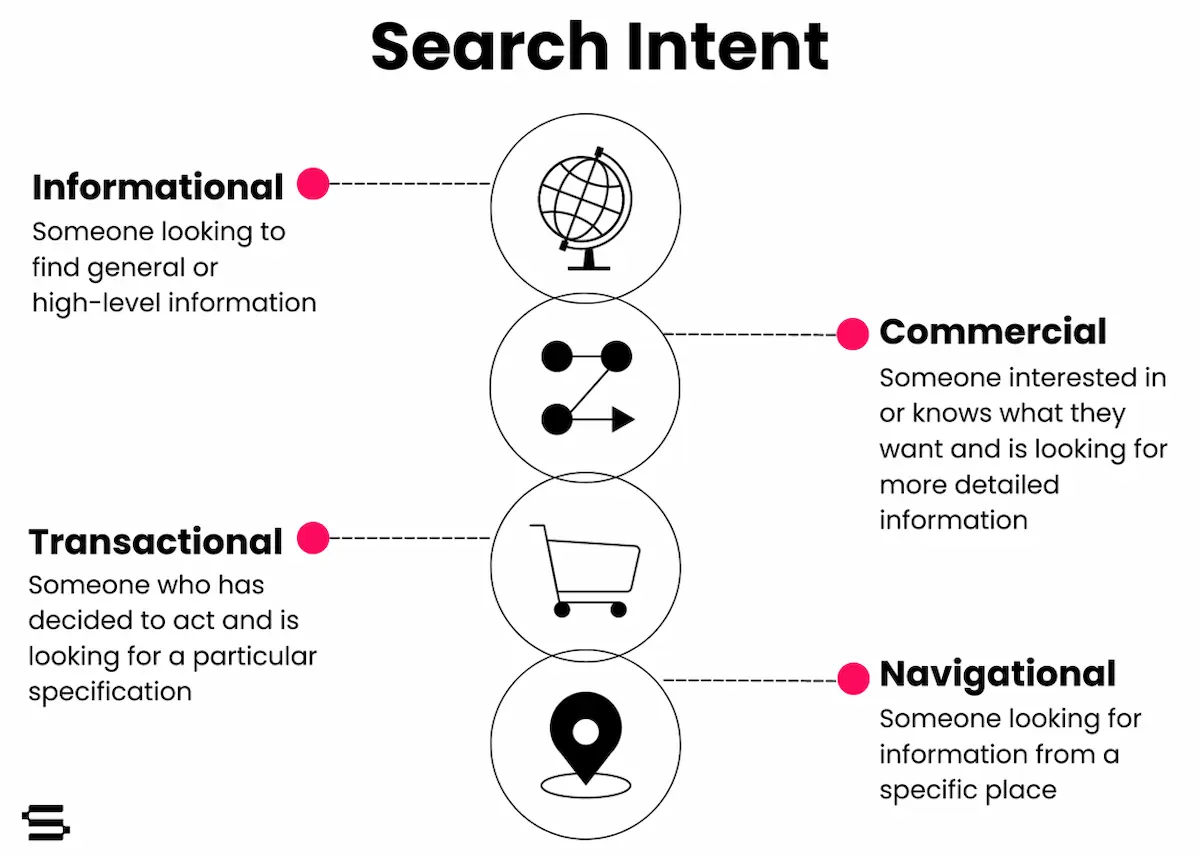Tube Rank: Your Guide to Video Success
Discover tips and insights for optimizing your video presence.
Search Intent Unboxed: What Your Users Really Want to Find
Unlock the secrets of search intent and discover what your users truly crave! Boost your traffic and engagement today!
Understanding the Different Types of Search Intent: A Comprehensive Guide
Search intent refers to the underlying purpose behind a user's search query, and understanding the different types can significantly enhance your SEO strategy. There are typically four main categories of search intent: informational, navigational, transactional, and commercial investigation. Each type serves a distinct purpose and can be identified by the way users phrase their queries. For example, a user searching for 'how to bake a cake' is likely looking for informational content, while someone searching for 'buy cake supplies online' is demonstrating transactional intent.
To optimize your content for various types of search intent, it's crucial to tailor your keywords and content structure accordingly. For instance, informational content should include comprehensive guides, articles, or FAQs that provide valuable insights and answer common questions. In contrast, transactional pages should emphasize product features, prices, and user reviews to facilitate purchases. Additionally, leveraging structured data can help search engines better understand the intent behind your content, potentially leading to improved visibility and user engagement across search results.

How to Optimize Your Content for User Search Intent
Optimizing your content for user search intent is essential for enhancing visibility and engagement. Begin by identifying the different types of search intent: informational, navigational, transactional, and commercial investigation. Each type serves distinct purposes, so understanding your audience's motivations is key. Use tools like keyword research to discover what users are searching for, and categorize these insights into individual personas. For best results, create content that directly addresses the specific needs and questions of these personas.
Once you have a clear understanding of user intent, tailor your content accordingly. Start by utilizing the appropriate keyword phrases throughout your text, including headings, subheadings, and bullet points. This not only improves your SEO but also makes your content easy to scan. Incorporate rich media such as images, videos, and infographics to provide a more engaging experience that aligns with the search intent. Remember to monitor user interactions with your content through analytics; this will help you refine your strategy to continuously meet user needs.
What Do Your Users Really Want? Unpacking Their Search Intent
Understanding user search intent is crucial for optimizing your content to meet the needs of your audience. What do your users really want? This question lies at the heart of effective SEO strategies. By analyzing search queries, you can identify intentions behind searches, whether they're seeking information, looking to make a purchase, or wanting to navigate to a specific site. A clear grasp of search intent can help you tailor your content to align perfectly with what your audience is searching for, improving engagement and conversion rates.
Search intent typically falls into four main categories: informational, navigational, transactional, and commercial investigation. Understanding which category your audience falls into allows you to craft targeted content. For instance, users with informational intent may be looking for how-to guides or tutorials, while those with transactional intent are likely ready to make a purchase. By unpacking user search intent, you can create content that resonates more deeply with your audience, enhancing their overall experience.